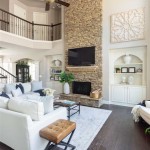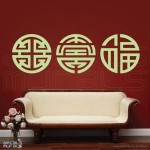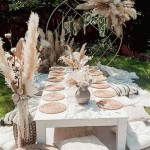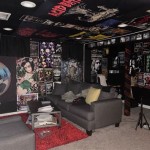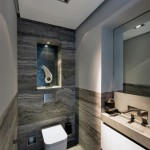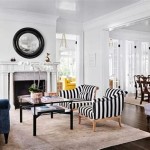How To Decorate a Dining Room Wall Art
Dining rooms often serve as central gathering spaces in homes. Selecting appropriate wall art contributes significantly to the room's ambiance and overall aesthetic appeal. This article explores various strategies for decorating dining room walls with art, considering factors such as scale, style, and the existing décor.
One of the initial considerations is the size of the wall. Large, blank walls offer opportunities for substantial statement pieces. Oversized paintings, tapestries, or a gallery wall arrangement can create a focal point. Conversely, smaller walls benefit from carefully chosen, smaller-scale pieces to avoid a cluttered appearance. Measuring the wall space before selecting artwork ensures appropriate proportions.
The dining room's existing décor dictates the style of art that will complement the space. A modern dining room with clean lines and minimalist furniture might suit abstract art, geometric prints, or black and white photography. Traditional dining rooms with ornate furniture and rich color palettes might benefit from classical landscapes, still life paintings, or framed antique maps. Matching the art style to the existing décor creates a cohesive and harmonious atmosphere.
Color palettes play a crucial role in tying the room together. Artwork can either complement or contrast the existing color scheme. Choosing art that incorporates the room's dominant colors creates a sense of unity. Alternatively, using artwork with contrasting colors can introduce a vibrant and dynamic element. Considering the colors present in the furniture, rugs, and other décor elements helps in selecting artwork that enhances the overall color balance.
Creating a gallery wall is a popular approach for showcasing multiple art pieces. This arrangement allows for a diverse display of personal photographs, smaller prints, and varied artwork styles. When creating a gallery wall, it is essential to establish a cohesive element, such as consistent frame styles or a unifying color palette. Planning the layout beforehand, either on the floor or using paper templates, helps achieve a balanced and visually appealing arrangement.
Beyond traditional framed art, there are numerous alternative options to explore. Mirrors can create an illusion of space and reflect light, brightening the dining room. Decorative plates, trays, or woven baskets can add texture and visual interest. Sculptural wall hangings or metalwork offer three-dimensional elements. Exploring these non-traditional options can add unique personality and character to the space.
Lighting plays a significant role in showcasing artwork effectively. Installing focused lighting, such as picture lights or track lighting, highlights the artwork and adds drama to the dining room. Consider the direction and intensity of the light to avoid glare or shadows that obscure the art. Proper lighting enhances the colors and details of the artwork, creating a more impactful display.
The height at which artwork is hung influences the overall visual balance. A general guideline is to hang artwork at eye level, with the center of the piece approximately 60 inches from the floor. However, this can be adjusted depending on the ceiling height and the furniture placement. For example, artwork hung above a sideboard or console table should be positioned lower to relate to the furniture piece. Ensuring proper placement creates a harmonious relationship between the art and the surrounding elements.
The dining room table itself can influence the selection and placement of wall art. A large, rectangular table might benefit from a horizontally oriented artwork hung above it. A round table might suit a single statement piece or a circular arrangement of smaller pieces. Considering the shape and size of the table helps in selecting artwork that complements the dining area's focal point.
Finally, personal style and preferences should guide the selection of dining room wall art. Choosing pieces that resonate personally contributes to a space that feels inviting and reflects individual tastes. Whether it's a cherished family photograph, a piece collected during travels, or a painting that evokes a particular emotion, incorporating personal touches adds a unique and meaningful layer to the dining room décor.
Decorating a dining room with wall art involves careful consideration of various factors, from the size of the wall to the existing décor and personal preferences. By thoughtfully selecting and arranging artwork, individuals can create a dining space that is both visually appealing and reflective of their unique style.
:strip_icc()/127107347_378909933559802_5209338986625741338_n-d8e04eccf7274b2b91e5b75ec9ca40ef.jpg?strip=all)
29 Dining Room Wall Décor Ideas
:max_bytes(150000):strip_icc()/art4-445991107c1841ccb4f3a266e6793183.jpg?strip=all)
46 Dining Room Wall Art Ideas For Elevated Entertaining

20 Ways To Dress Up Dining Room Walls Wall Decor

54 Simple Dining Room Wall Decor Ideas Displate Blog

20 Ways To Dress Up Dining Room Walls Wall Decor

55 Dining Room Wall Decor Ideas Interiorzine

20 Ways To Dress Up Dining Room Walls Wall Decor

Dining Room Wall Art Ideas Inspired By Existing Projects

54 Simple Dining Room Wall Decor Ideas Displate Blog

55 Dining Room Wall Decor Ideas Interiorzine
